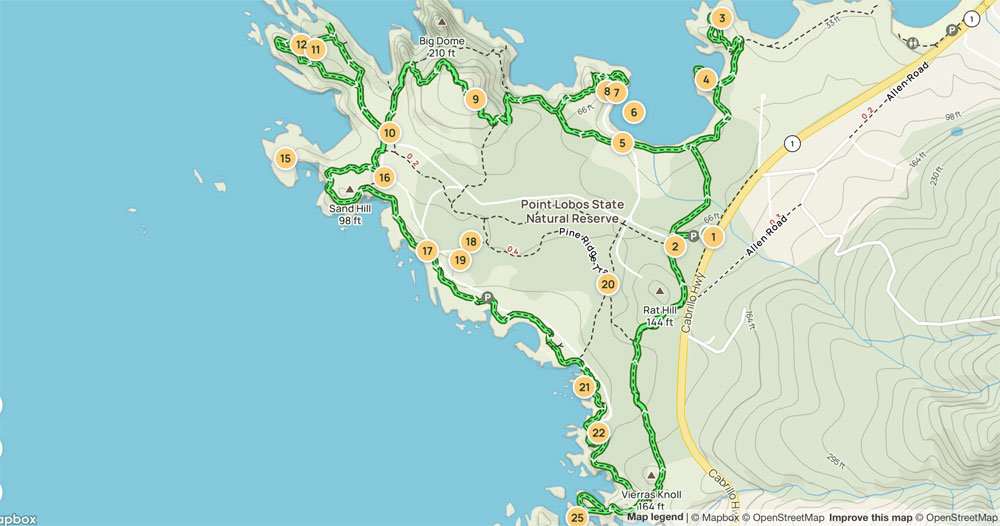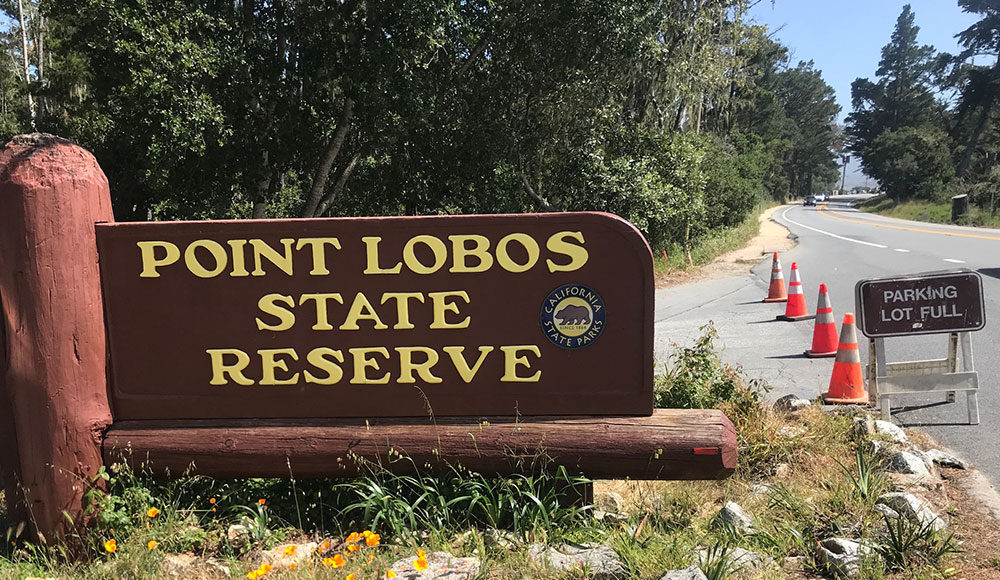Point Lobos State Natural Reserve is called the crown jewel of the California State Parks system. Landscape painter Francis McComas called it “the greatest meeting of land and water in the world.” Some 600,000 people a year come here, so all the strict rules about staying on the trail make sense.
They tell you to please stay on the trails, but they are not trails; they are manicured walkways. Calling them trails is a step too far. I’ve seen rougher terrain at the Riverwalk Plaza Shopping Mall. There are portions of Point Lobos trails that are cleaner than my house.
Me and my hiking buddies Ben Rice and Sleepy John Sandidge notice the “Parking Lot Full” sign, but we’re not fans of paying for parking anyway. We drive a little past the entrance and park on the side of Highway 1 and walk back to the entrance booth.
It’s almost like an outdoor museum, with docents everywhere, there to explain ecosystem behavior, but spending most of their time showing walkers where they are on the map.
There are so many little trails it is easy to lose track of where you are, and isn’t that the point? Some things can’t be discovered without getting lost. It’s exploring. It’s not like you’re going to get lost in Point Lobos and starve to death. You won’t get lost long enough to be late for lunch. On the other hand, I saw a T-shirt that said, “Bring a compass, it’s awkward when you have to eat your friends.”
We buy a couple of two-dollar maps. There is a labyrinth of trails, and we spend way too much time staring at the map to debate where we are on the map. There are paths aplenty and you can walk to almost anywhere in the reserve: the loop around the park is 6.4 miles. For upcoming guided docent tours of bird walks, storytelling walks, women’s walks, go to docents.plsnr.org/publicwalks.
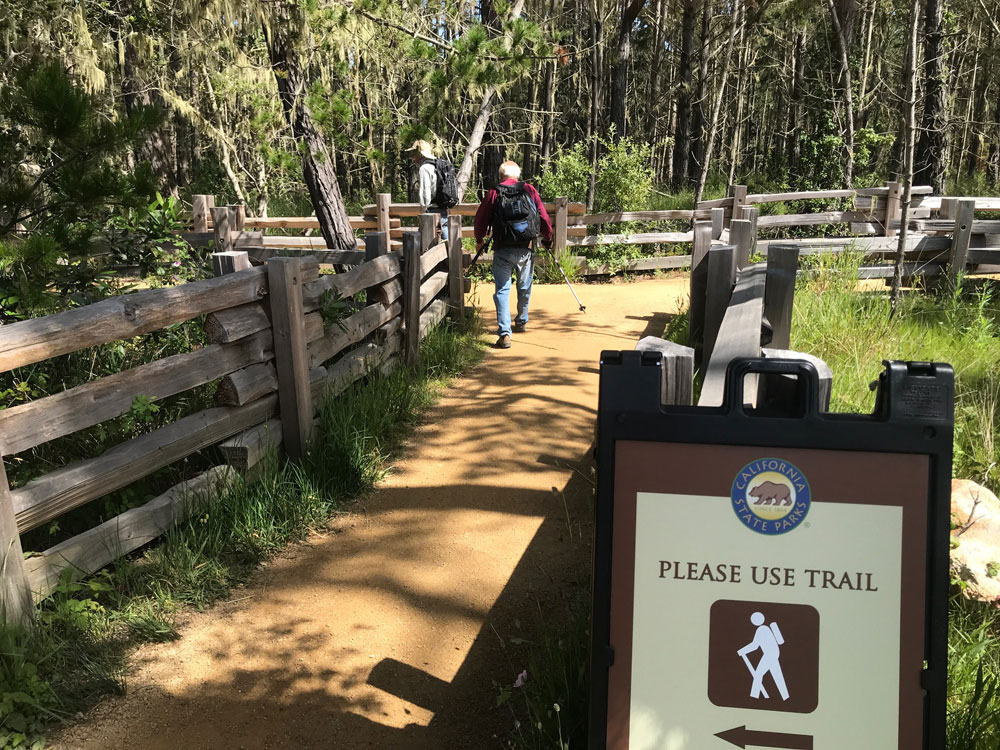
The range of hikers here go way beyond the usual suspects. While some people who walk these trails look like they are on an ecological pilgrimage with the most expensive hiking gear and clothes, others look around bewildered, like they have never been outside before.
One guy in black horned-rimmed glasses is wearing bedroom slippers; he looks like he is trying to escape a bad dream. He lunges forward with a desperate look on his face, like he forgot where he left his car in Airport Long Term Parking. I think, “Congratulations, my man, it’s noon and you’re out of the house!”
It’s a great place to bring your family, especially if you have little ones. As long as they stay on the paths, kids can run amok. For those of you thinking about making a family, or practicing the motions of that endeavor, it’s a great place for a date. I saw couples who appeared to find each other as interesting as the rock formations.
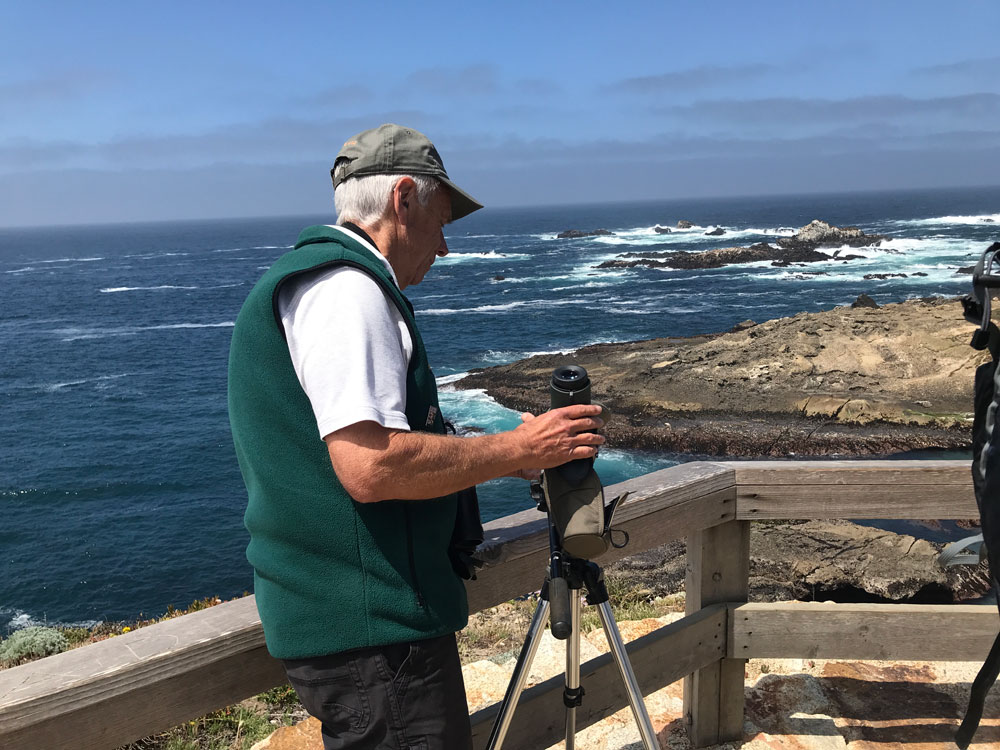
At Point Lobos State Natural Reserve, docents had telescopes set up to view otter “rafts” floating in “drifts” of kelp forests, and I heard one little boy gasp to see 20 otters floating together. “Daddy, are those real?” There are a lot of folks here today, even on a Thursday. Not the same hikers you might see miles back up in the woods, and that is part of the Point Lobos State Reserve charm.
There are the youngest of hikers at the Point Lobos State Preserve, and the oldest. Babies in backpacks and frail folks in wheelchairs. It’s awesome to see these two age groups, our future and our history. As for the rest of us in between, we can be a frightening species.
What’s up with the name Point Lobos? Is this about wolves? Not exactly. I ask a docent where the reserve’s name came from and she said, “The Spanish explorers called this area “Punta de Los Lobos Marinos” which means the “point of the sea wolves.” Sea lions are so loud, you can hear them bark from anywhere in the reserve. According to the Point Lobos Foundation, early explorers used the sound of their bark in the fog to avoid crashing on the rocks.
Docents have binoculars and telescopes to point out the rafts of ever-social lions, where they lift their flippers out of the water to help warm or cool the body. It’s called thermoregulation. Dozens lie together on the rocks in the sun.
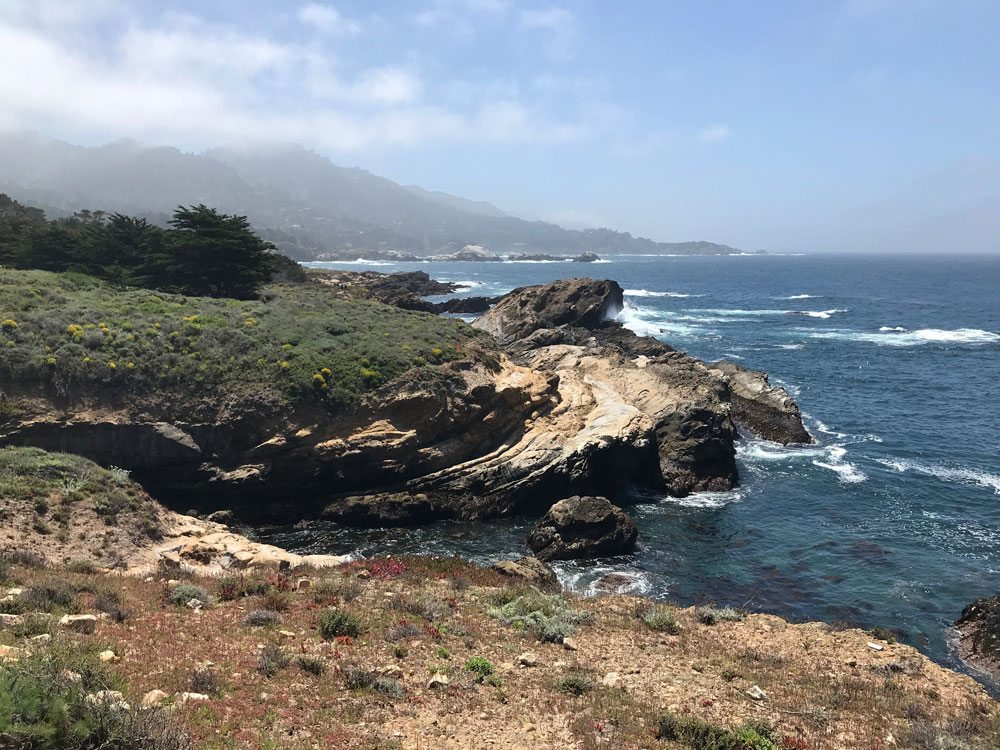
To see 20 float together to form a raft is worth the trip. There is a Disneylandesque quality to it, but at Point Lobos your legs are the ride and there is no standing in line. It’s free, and most of the 12 trails in the reserve are flat. You can do this even if you have tiny ones.
In the end, Point Lobos does not give Sleepy John, Ben and me the physical workout of our tromps through the woods. We may miss the climbs and descents, or the uneven ground that usually works out our legs, hearts and heads. Instead, we navigate back to our car on Highway 1 in contemplative euphoria, awed by the beauty of this meeting of land and water.
Lots of walkers, and a few rules: Stay on the trails, no dogs anywhere within the reserve, no bikes on trails, no collecting of anything (not a preference, it’s the law), no skateboards, no camping (day use only, 8 am-7pm, last entry at 6:30pm), and no drones.
How to get there: Go south on Highway 1, pass Carmel-by-the-Sea and the entrance to the reserve is next (big sign).
